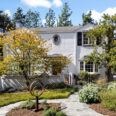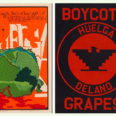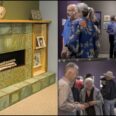
On Monday night, Pasadena’s City Council took another step toward reimagining the scar that has divided the city for more than half a century — the unfinished stub of the 710 Freeway.
In a presentation that blended transportation planning with civic soul-searching, officials unveiled two competing design concepts for the 50-acre corridor — one called “Gardens and Terraces,” the other “Boulevard and Plazas.” Both would erase the sunken lanes of concrete left behind by the aborted freeway project and replace them with a network of two-way streets, bike paths, parks and new housing intended to knit the city back together.
Transportation Director Joaquin Siques told the council the corridor was originally designed for speed, not connection. This corridor was built for high volumes and high speeds, Siques said, but the goal now is to calm traffic, create local connections and make this area a part of the city again.
The project, still in its conceptual phase, would reconnect north and south Pasadena with slower streets and green spaces while maintaining “a transportation purpose,” city officials said — one that prioritizes people over vehicles.
The state first seized land for the 710 Freeway extension in the early 1960s, using eminent domain to clear entire blocks of homes and small businesses across west Pasadena. Most of the demolitions took place between the mid-1960s and early 1970s, as Caltrans prepared to link the 710 with the 210 Freeway. Hundreds of families — many of them Latino and African American — were forced from their homes.
The council also heard emotional public testimony from residents reflecting on the history of the neighborhoods demolished to make way for the freeway in the 1960s.
José Luis Correa, a member of the city’s 710 Advisory Group, recalled growing up on Orange Place — a small street bulldozed for the freeway — and spoke about the loss of a once-thriving, multiracial community.
“That’s what used to be in what everyone’s calling ‘the ditch’ — a wonderful neighborhood,” he said. “They were mostly hardworking Latinos, African Americans and Asians. Our world came, as we knew it, to an abrupt end when we were told we had to move because of the 210 and 710 freeways. My parents were lucky enough to find a home in Pasadena, but most of my neighbors were not so lucky. My mom used to tell me she was never as happy as she was when we lived on that little street called Orange Place.”
Construction was halted in 1973 amid growing public opposition and environmental lawsuits, leaving the trench of exposed earth and concrete that locals came to call “the ditch.” For the next five decades, the property sat in limbo under Caltrans ownership — a physical reminder of promises broken and neighborhoods erased — until the state officially relinquished the land to Pasadena in 2022.
“If one looks at a map of light rail in our region, a sixth grader could tell you that what we’re missing is a continuation of the Gold Line (now the A train) from the place where it heads east at the 210 West, and we should be able to move persons from Pasadena to, for example, the Burbank airport on light rail,” observed Councilmember Steve Madison. “People who come to events at Rose Bowl should be able to depart a rail line at essentially the freeway interchange. That’s the kind of forward thinking that should included in the plan.”
However, Mayor Victor Gordo cautioned that any redevelopment could trigger complex state housing and transportation laws.
“We own the stub and we can manage the development of that. But once we put these transportation modes in… then think of the properties within half a mile of the stub — we don’t control those,” Gordo said.
SB 79, creates transit-oriented development (TOD) zones by eliminating single-family zoning near qualifying transit stops and imposing minimum density requirements that override local zoning codes.
The law aims to increase housing density in these zones to address the state’s housing shortage, though it will not take effect until July 1 unless a local agency acts sooner.
City staff will continue refining both design concepts and return with more detailed plans and cost estimates early next year.
“The Reconnecting Communities task force has done an excellent job of vetting and narrowing the issues the City Council will need to address as we work to craft a vision for the future development of the 710 stub,” said Councilmember Jason Lyon. “There is still work to be done to decide the right mix of open space versus development, where to redirect the flow of traffic so that it doesn’t overtake surrounding neighborhoods, and how to redress historic injustices caused by freeway land seizures, among other issues, but the work of the task force has helped to focus our community conversation going forward.”


















